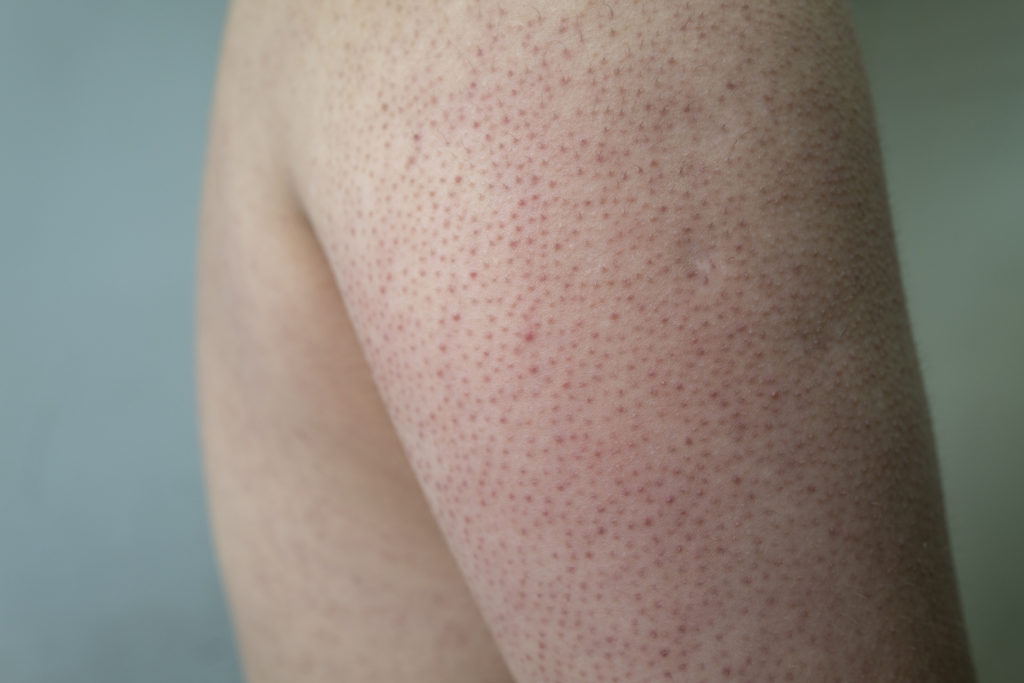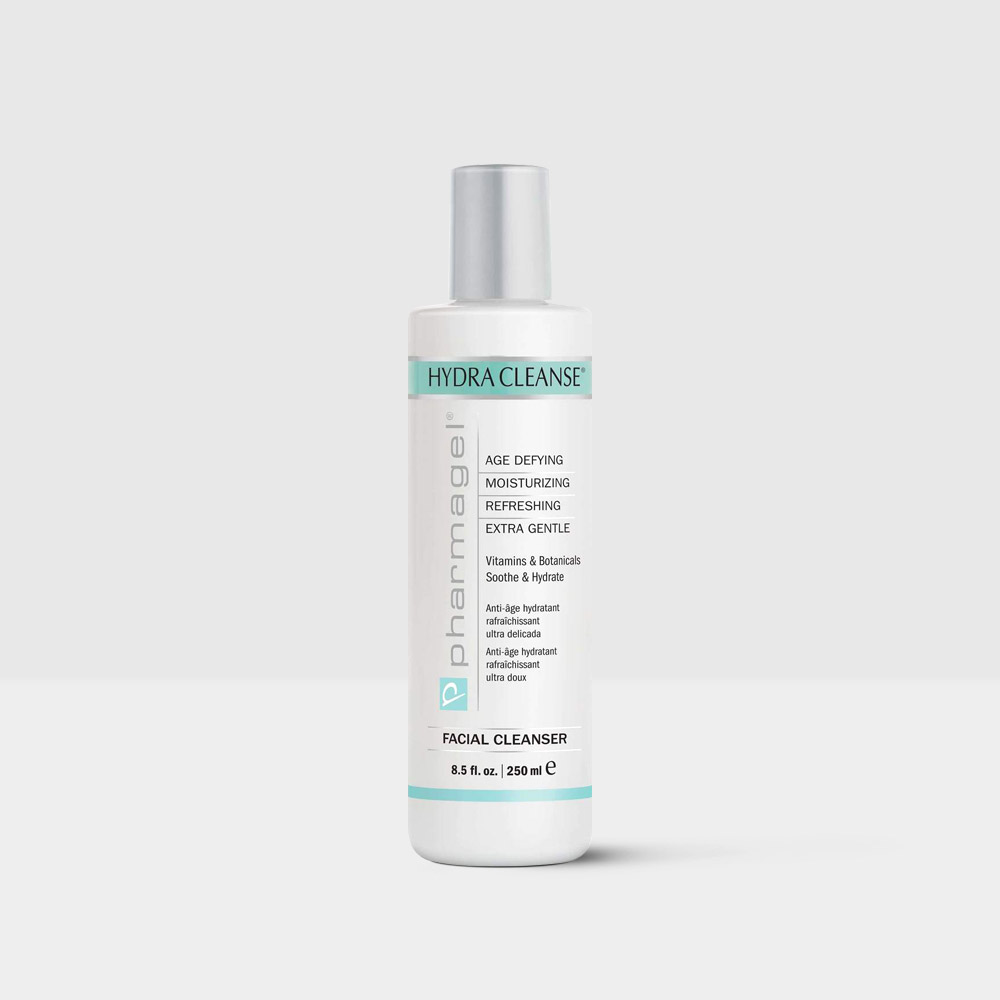What Is Kerastosis Pilaris and How To Get Rid of This Common Skin Condition
Got pesky, little dry bumps on your skin? We’re here to help.
Thanks to YouTube, TV shows, and social media, it’s safe to say that the country has established a newfound obsession with self-care, skincare and dermatology. But with this obsession comes a seemingly never-ending list of unfamiliar skin conditions, making a simple Google search quite the intimidating (and sometimes terrifying!) experience. This, coupled with an innate desire to self-diagnose, has brewed a recipe for disaster — we can never be 100 percent sure what is wrong with our skin and yet we choose to scare ourselves before seeking proper medical attention.

Perhaps one of the most commonly misdiagnosed skin conditions is keratosis pilaris, also called K.P., a completely harmless trail or patch of red bumps frequently mistaken for acne, rashes, razor bumps, psoriasis, eczema, or just severely “dry skin.” Its presence can be quite alarming, but there are a bevy of treatment options that can reverse and prevent its spread. Everyone from adolescents to adults have battled with K.P.
To delve into all things K.P., we chatted with board-certified dermatologist Dr. Annie Gonzalez of Riverchase Dermatology. She shared everything you could ever want to know about what has been jokingly referred to as “chicken skin,” as well as the steps you should take if you have it (hint: not Google searching or freaking out).

Beautytap: What are the symptoms of keratosis pilaris?
Dr. Annie Gonzalez: Keratosis pilaris, sometimes called chicken skin (it also looks similar to goosebumps), causes tiny dry, small bumps and rough patches on the skin. It is a common skin condition that is harmless, and the bumps usually don’t itch or hurt. The patches or bumps can only appear where hair follicles exist and are commonly found on the cheeks, upper arms, buttocks, and thighs. This condition is common, and there is currently no cure, but there are ways to treat it.
BT: What causes keratosis pilaris?
AG: Keratosis pilaris is caused by the buildup of a hard protein called keratin, which protects the skin from infection and harmful substances. Patches of bumpy, rough skin appear because the keratin blocks the opening of hair follicles. It is not known why keratin builds up in people with keratosis pilaris. Still, the buildup of keratin may be associated with skin conditions such as atopic dermatitis or a genetic disease that may require further diagnosis. Keratosis pilaris is usually worse in the winter and may clear up in the summer. In addition, if you have dry skin, you may be more likely to have keratosis pilaris.
BT: What is the difference between keratosis pilaris, acne, and ingrown hairs? How can you tell?
AG: Ingrown hairs are when hairs have been waxed, tweezed, or shaved, and the hair grows back into the skin instead of rising up from it. They can appear as raised bumps on the skin and differ from keratosis pilaris because ingrown hairs can be itchy and irritating. Ingrown hairs are sometimes also filled with pus. Body acne and face acne are mainly caused by clogged pores and overactive oil glands, leading to inflammation and acne. Acne differs from keratosis pilaris because it is commonly found on the back, chest, and face, while keratosis pilaris is found on the cheeks, upper arms, buttocks, and thighs. In addition, unlike pimples, bumps from keratosis pilaris appear dry on the skin and feel rough and they aren’t filled with bacteria or pus.
BT: How can you prevent keratosis pilaris?
AG: To prevent keratosis, wash your skin with a solid cleanser and use topical retinoids (including tretinoin) or creams derived from vitamin A to promote cell turnover and prevent plugged hair follicles. In addition, make sure to moisturize your skin around two to three times a day. Moisturizers that contain urea are a great option because they help soften rough, dry skin. Shower with mild water and mild soap, and do not rub your skin after showering or bathing. Pat your skin dry after showering or bathing, and make sure to moisturize after.

BT: What are the best remedies for keratosis pilaris?
AG: To treat keratosis pilaris, you can use steroid creams and over-the-counter lotions on the affected skin to reduce itching and redness. You can also use exfoliating skin creams that contain ingredients like alpha hydroxy acids - lactic acid, salicylic acid, glycolic acid, and urea to help loosen dead skin cells, relieve the dryness and soften the skin. Your dermatologist may also prescribe a medication that contains the noted ingredients to remove dead skin cells. Moisturize the skin to soothe it and exfoliate gently to remove dead skin cells from the surface. If medicine and moisturizer fail, laser treatment may be used to treat keratosis pilaris. One type of laser can reduce skin discoloration and improve skin texture, while another can reduce redness and swelling. IPL (Intense Pulsed Light) is a laser that has shown effectiveness in treating keratosis pilaris.
It’s ultimately up to a dermatologist and his or her patient to come up with an effective treatment plan. Should you find yourself suffering from keratosis pilaris, be sure to set up an appointment with your healthcare professional and start from there. Results may take time, but it’s typically easy to treat and surely a lot less anxiety-inducing than tackling it on your own.
Loading...